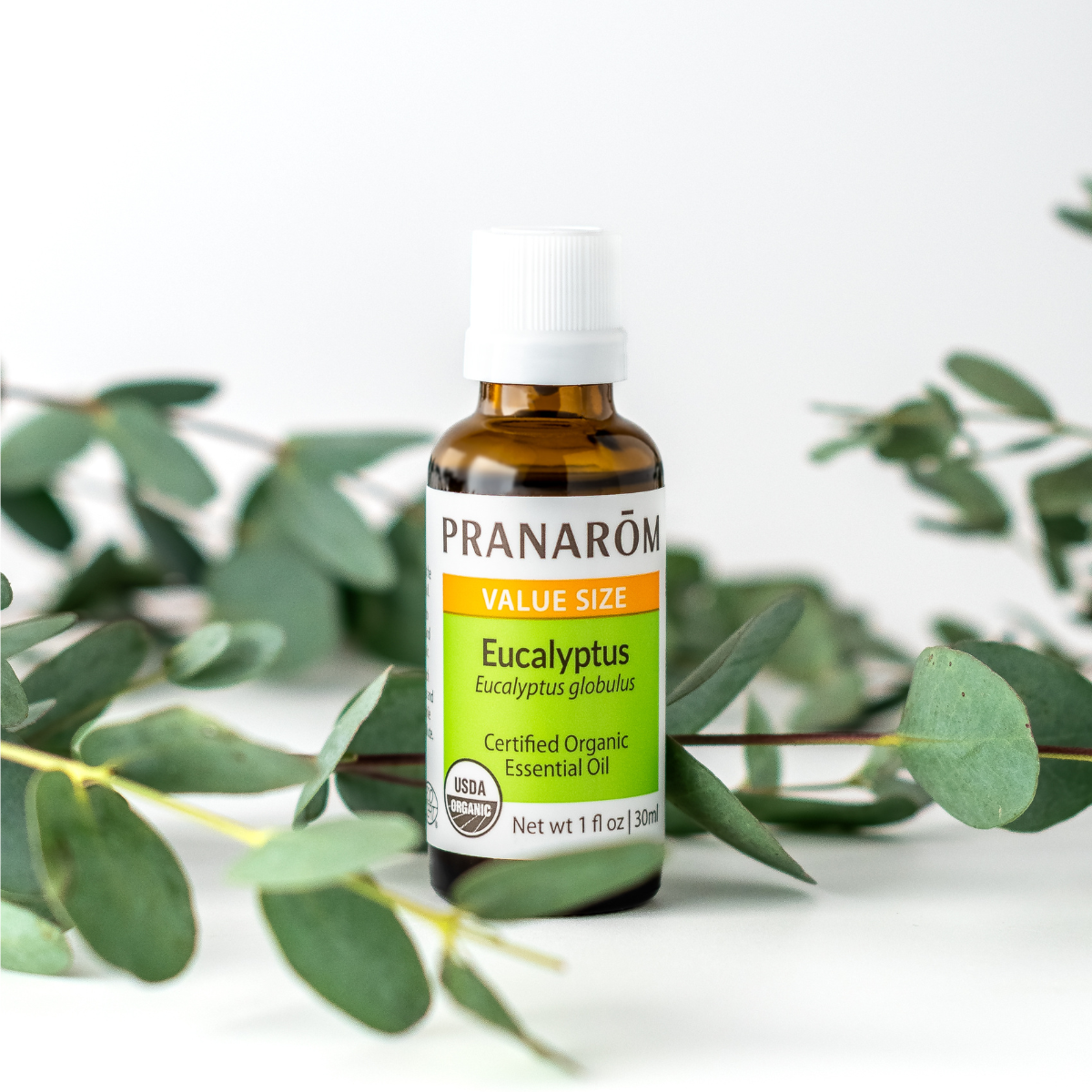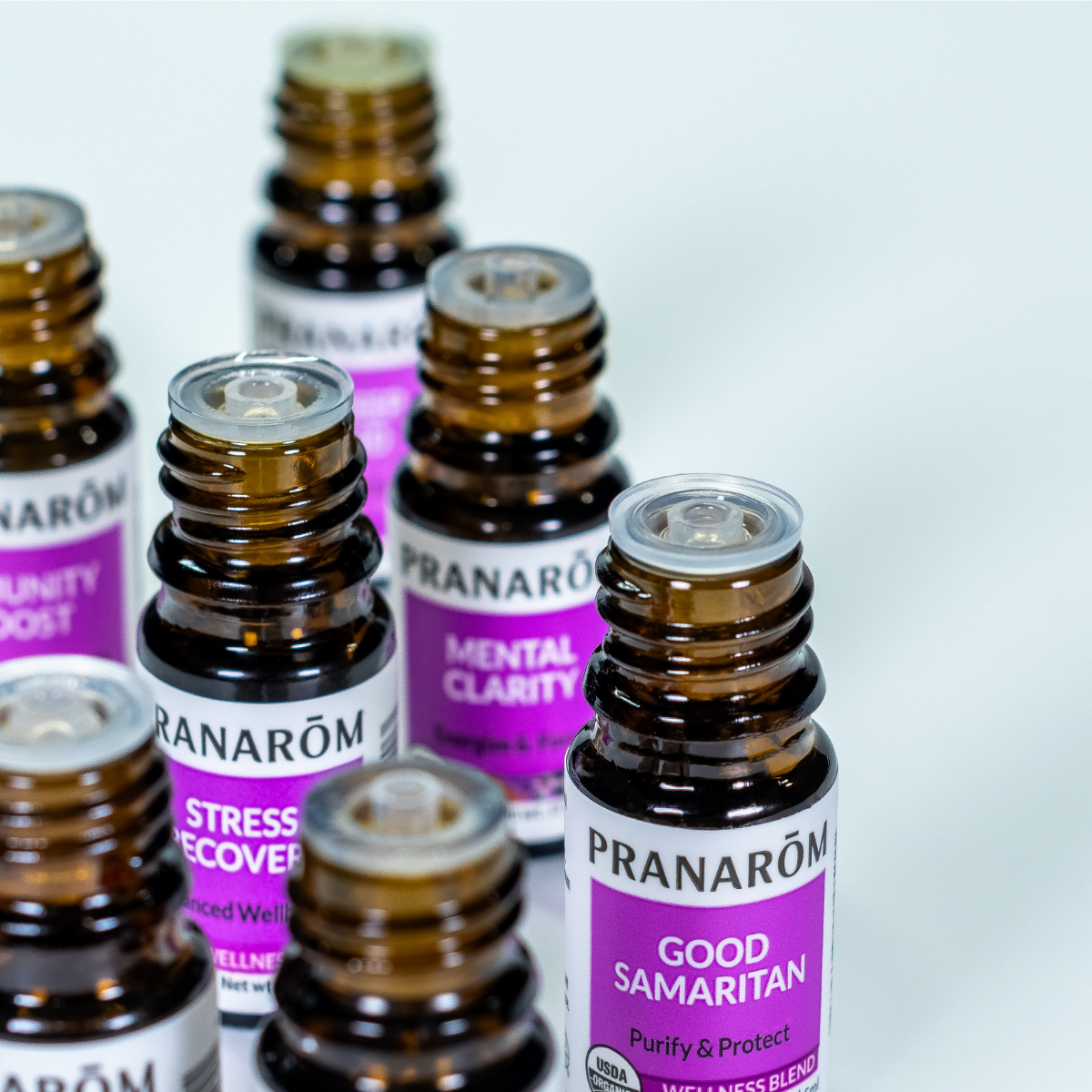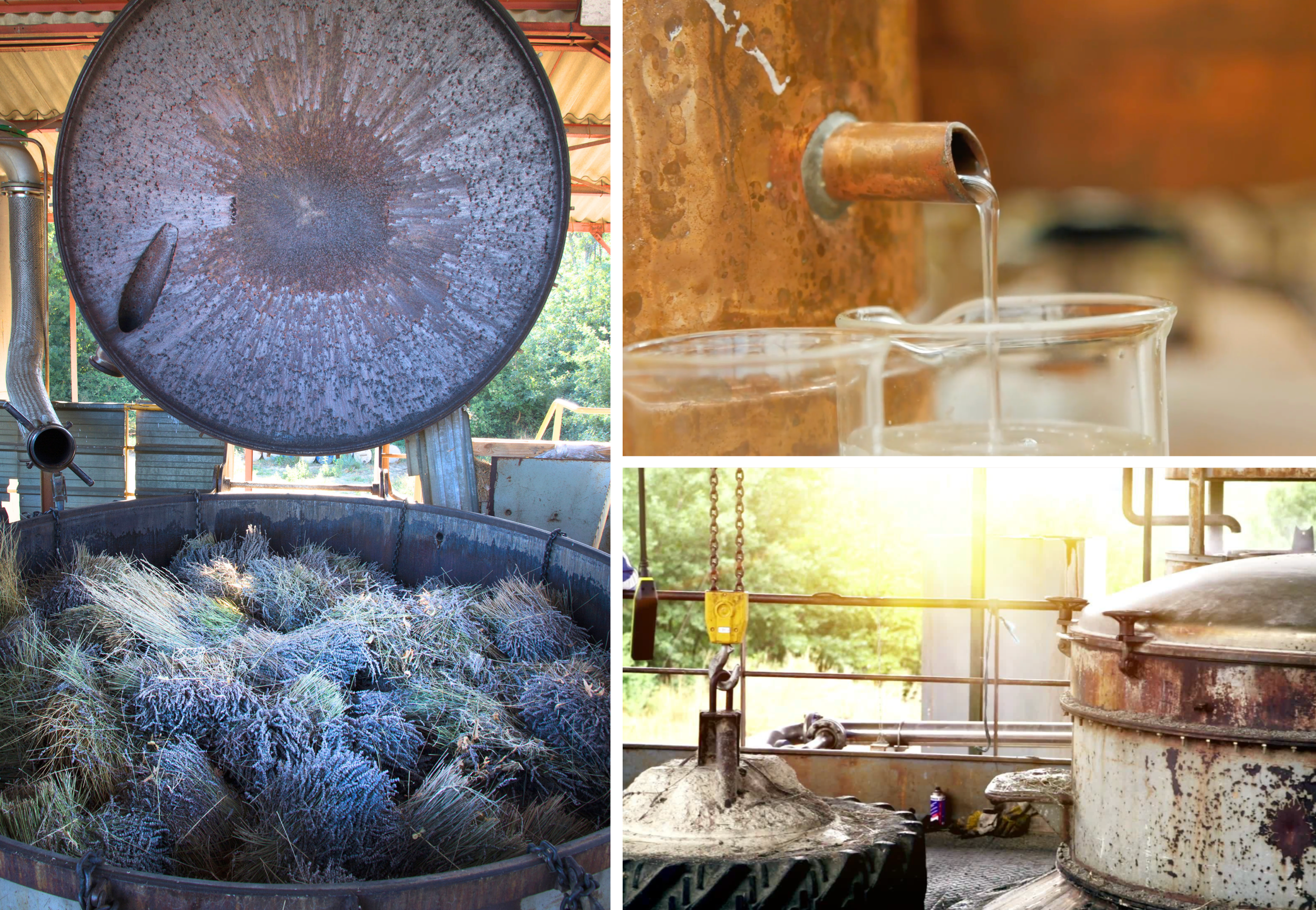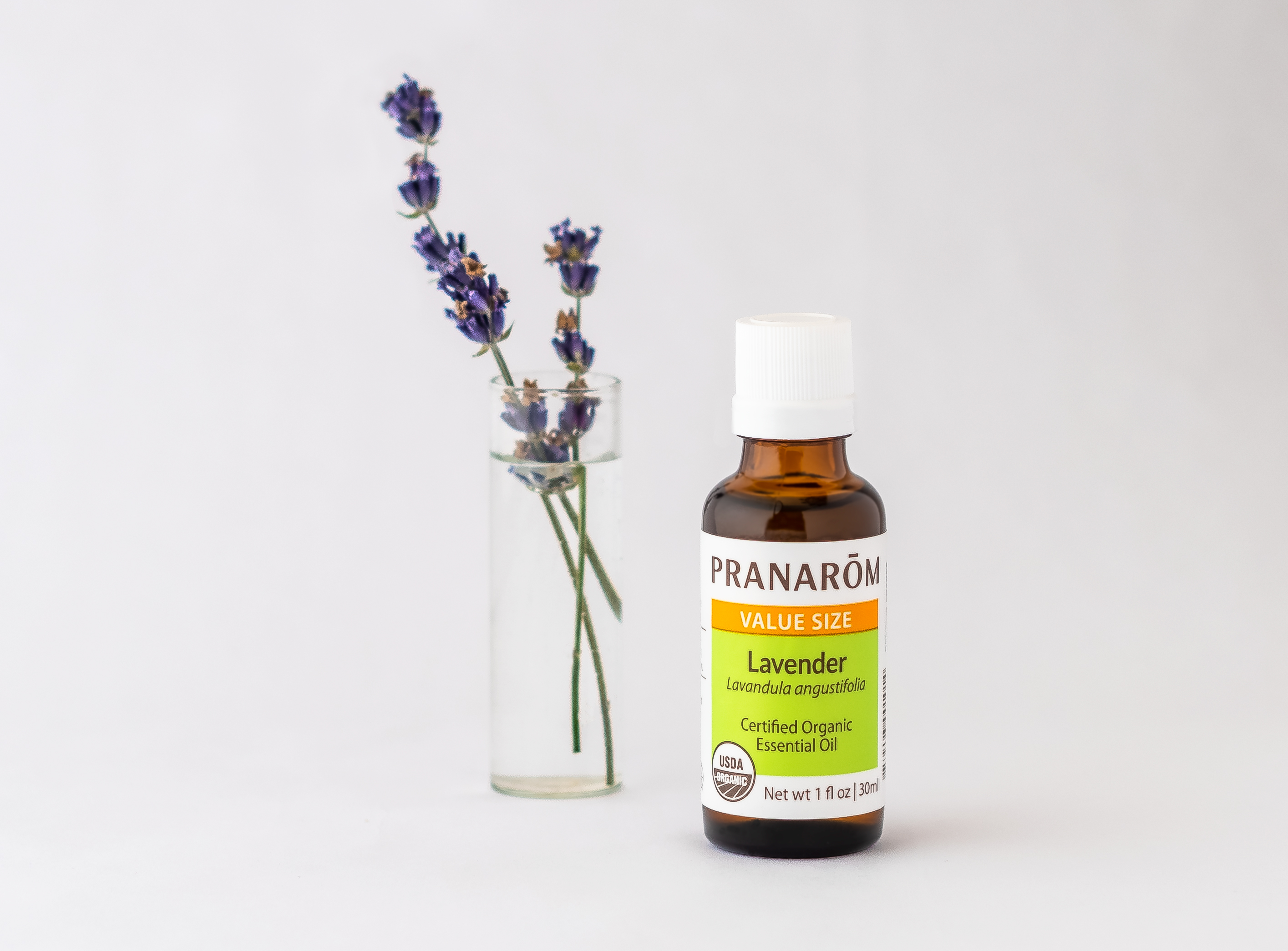Friday, June 30th, 2023 | Article by: Liza Docken

In the hustle and bustle of our day-to-day lives, we’re often in need of support for mental functioning. Whether it’s focus, concentration, alertness, or attention we’re hoping to increase, it turns out smelling essential oils can make a big difference. We can thank Olfaction for our ability to gain benefits from smelling things like essential oils, flowers, and so on.
Olfaction happens through the Olfactory System, & here’s a rudimentary explanation of how that works. When we inhale and notice a scent, it means we’ve breathed in an aromatic molecule. Given that all scent is particulate, these molecules exist in us and cause a reaction in us regardless if the scent is good or bad. These molecules act as messages and when breathed in are taken in by our Olfactory Nerves, which hang down from the top of our nasal cavity. These nerves cross the ethmoid bone, or cribiform plate, carrying the molecule messages to our Olfactory Bulb. Here, the messages are taken along the Olfactory Tract into the Limbic System of the brain, which includes the Hypothalamus, the Hippocampus, and the Amygdala. These parts of our brain are responsible for regulating and balancing our autonomic nervous system, our hormones, our emotions (including those that can cause us to lose focus), and our memories. Needless to say, simply breathing in a scent goes far beyond the enjoyment of aromas.

Single Note Essential Oils for Focus
When it comes to essential oils for focus, we have a good many to choose from. Here’s a quick comprehensive list that includes some of the best essential oils for focus, concentration, and studying.
Basil – this herbaceous, fresh scent has been known to soothe those who suffer from ruminative thinking, when your brain replays the same thought again and again like a skipping record. Also known for its supportive nature during headaches, this essential oil has a lot to offer when we’re looking for greater concentration for work or studying.
Bergamot and other citruses – citrus scents can help with mental fatigue thanks to their ability to uplift the sprits and focus our mind and attention. Lemon, Orange, and Grapefruit are equally beneficial, letting you choose the one you like best.
Black Spruce – conifers like black spruce can support ease of breath, which in turn can help us take deeper breaths. Like a chain reaction, this helps us feel more grounded and present which makes focusing on a task much easier. It also has the ability to bring relief during times of stress, one of the biggest causes for distraction and mental fatigue.
Eucalyptus Globulus or Eucalyptus Radiata – both eucalyptus varieties are supportive of the respiratory system, and can enhance ease of breath and a feeling of alertness.
Frankincense – typically used as a way to enhance reverence and increase spiritual connectedness, Frankincense can also promote ease of breath. This is a great way to support meditation and deeper breathing, both known to help with general focus and concentration.
Lavender – best known for its ability to relax and encourage rest, Lavender Lavandula angustifolia’s anxiolytic capabilities have been shown to decrease tension, another of the main causes of mental fatigue and distracted mind.
Lavender, Spike – not to be confused with Lavender, Spike Lavender Lavandula spicata has a different constituent profile, including higher levels of a constituent called 1,8 cineole. This constituent is also present in Eucalyptus Globulus, Eucalyptus Radiata, and Ravintsara, all of which can invigorate the senses and support the respiratory system.
Lemongrass – a popular refreshing scent that works both as a calming agent and a motivator, helping you to stay focused and on task.
Peppermint– invigorating, energizing, and stimulating, this is a quintessential scent for promoting concentration, attentiveness, and focus.
Pine, Scotch – a great option in times of severe fatigue or exhaustion, this awakens the body and mind via its fresh forest scent.
Ravintsara ct 1,8 cineole – this oil’s ability to support as a neurotonic is a fantastic option where exhaustion, stress, and anxiety might be thwarting your ability to focus and stay on task.
Rosemary ct 1,8 cineol – a staple scent for supporting memory, mental acuity, and focus. This oil has a long history of use for remembrance and attention and is one of the best essential oils for concentration. Rosemary ct 1,8 cineole’s effects are in part thanks to its ability to support circulation.
Spearmint – a softer counterpart to Peppermint, this oil has a sweetness to its stimulation which can soften the effects if you’re not in need of a full-on boost.
Thyme ct linalol – the softer of two variations, Thyme ct linalol can offer relief from nervous fatigue, a common side effect of busy lifestyles. This is the softer aroma of the two Thymes as well.
Thyme ct thymol – this more intense version of Thyme is due to its stimulating constituents which gives it an invigorating and intense impact. This oil is best used in a blend for focus and mental clarity.
Vetiver – this oil is the queen bee of centering and grounding. These two elements can help us reconnect with the present moment, something that naturally promotes the ability to focus and concentrate.

Essential Oil Blends for Focus and Concentration
Mixing your favorites from the list of essential oils for focus and concentration, you can make a blend tailored to your interests. Here are some examples of blends that work nicely together.
Focus Essential Oil Blend for Topical Use
- Bergamot 30 drops
- Basil ct linalol 10 drops
- Peppermint 10 drops
Add these oils to 50 drops of your carrier oil of choice – I like Jojoba in this blend thanks to its texture and neutral scent – and massage 4-5 drops into the solar plexus twice a day, when needed.
Focus Diffuser Blend
- Black Spruce 25 drops
- Lavender 35 drops
- Ravintsara ct 1,8 cineole 15 drops
Create your synergy by adding these oils to a clean 5ml bottle, swirl to combine the essential oils, then add 4-5 drops to your diffuser. 8-9 drops of the synergy can be used for larger rooms and areas. Great at the office, for study sessions, or any time you need a little boost for concentration and attention.

Pre-formulated Essential Oil Blends from Pranarōm
When it comes to supporting students of all ages, some of the best essential oils for studying are available in pre-made blends by Pranarōm.
For those under 12, the Pranakids Play diffusion blend is an effective option while being safe for use with children from 3 months and up. This blend is formulated with Sweet Orange, Spearmint, Atlas Cedarwood, and Bergamot essential oils.
For those over 12 years of age, Pranarōm offers both Find Focus and, a longtime favorite, Mental Clarity. Each expertly formulated blend has its own aromatic characteristics. Find Focus is formulated with Grapefruit, Sweet Orange, Peppermint, and Lemongrass essential oils to help improve concentration and support focused attention. Mental Clarity is formulated with Peppermint, Lemon, Grapefruit, Lavender, Rosemary ct 1,8 cineole, and Basil ct linalol essential oils for boosting energy and refreshing the mind. Shop all of our Wellness Blends here!
Methods for Using Essential Oils for Focus
Diffusion is one of the best options for getting the most benefits from essential oils, especially when used for focus, concentration, or studying. I recommend an ultrasonic diffuser, a style that does not use heat to diffuse. This style of diffusion maintains the therapeutic and aromatic qualities of an essential oil better than a heat-sourced diffuser.
When a diffuser is not available, try palm inhalation! Add a drop of your single note essential oil or blend to your palms and rub them together. The warmth and friction caused by rubbing the palms together helps to open the aroma. Cup the palms and bring them toward your nose as you breathe in deeply through the nose 3-5 times. In a pinch, you can smell the oil right out of the bottle and still receive benefits. With a little more time you can add your oil(s) to a carrier oil and use this blend to massage into the chest or shoulders to enjoy the aromatics in a more personal way.
With so many options available, finding an essential oil for focus that appeals to you is easy! Try one of these suggested single notes, DIY blends or pre-formulated blends by Pranarōm today and notice how quickly they can help you.










